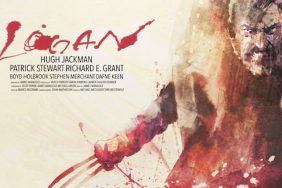Image: Courtesy of The Separate Cinema Archive
Sam Lucas was the first black actor to be cast in a major motion picture in 1914. That film was Uncle Tom’s Cabin, and it was the second film adaptation of the novel; the first, made in 1903, featured a white actor in blackface who wore a black suit. In the original film adaptation, a supporting cast of white actors playing slaves danced the cake-walk and played craps happily before being sold at auction in bright, vibrant clothes. It was less than forty years since Emancipation, and already Hollywood took a heavy hand in historic revisionism.

As Henry Louis Gates Jr. writes in the book’s foreword, “From the dawn of the silent era to movies screening digitally around the world today, black film, like any medium, reflects the journey of African Americans in society. And the posters these films generate and inspire constitute their own art form and pattern of representation, like a parallel visual universe, mirroring (not literally but figuratively, as acts of interpretation) what an artist or producer felt to be the dominant message about race in America that these films contained: ninety minutes, say, reduced to one image, an image that over time, became both an icon and a work of art of its own.”

Image: Courtesy of The Separate Cinema Archive
Collected and presented here in a brilliantly sequenced chronology, we travel through a century of artwork that is by its nature anonymous. With the exception of designers such as Saul Bass and Paul Rand, the posters went unsigned by the artist’s hand. Without known authorship, what remains is a focus on the films themselves, keeping our attention focused on the story itself, and allowing certain actors to elevate to the celestial heavens of Hollywood stardom.

Image: Courtesy of The Separate Cinema Archive
The book features chapters on Norman Films (the first black film company), Oscar Micheaux (the first black film auteur), Josephine Baker, Stepin Fetchit, Ethel Waters, Paul Robeson, Bill Robinson, Lena Horne, Joe Louis, Jackie Robinson, Sidney Poitier, Dorothy Dandridge, Harry Belafonte, Sammy Davis Jr., Ossie Davis, Muhammad Ali, Richard Pryor, Eddie Murphy, and Spike Lee, as well as genre topics such as music, documentary, and Blaxploitation, among others.

Image: Courtesy of The Separate Cinema Archive
An essential sourcebook, Separate Cinema traces the development of African American cinema in tandem with the representations of black America in white Hollywood, beginning with Birth of a Nation and ending with Fruitvale Station, tracing a trajectory that closely overlaps the historic changes in the nation during that same time period. Taken as art, popular culture, and history, Separate Cinema is a tour-de-force of illustrated publishing.
Separate Cinema by John Duke Kisch and Tony Nourmand is published by Reel Art Press RRP £45
Miss Rosen is a New York-based writer, curator, and brand strategist. There is nothing she adores so much as photography and books. A small part of her wishes she had a proper library, like in the game of Clue. Then she could blaze and write soliloquies to her in and out of print loves.




